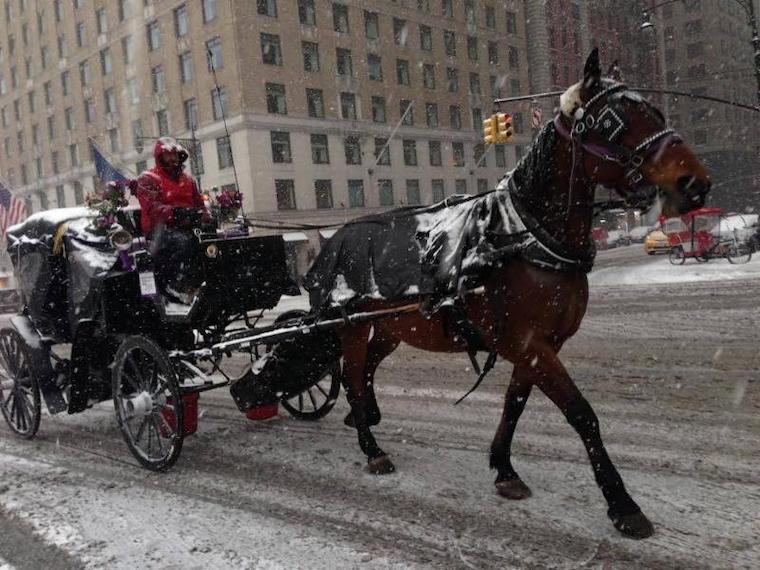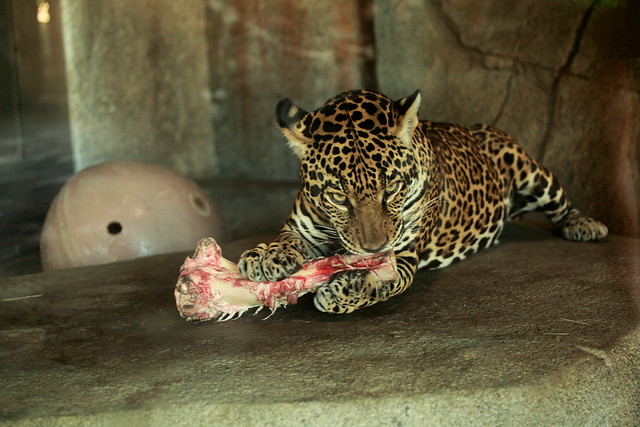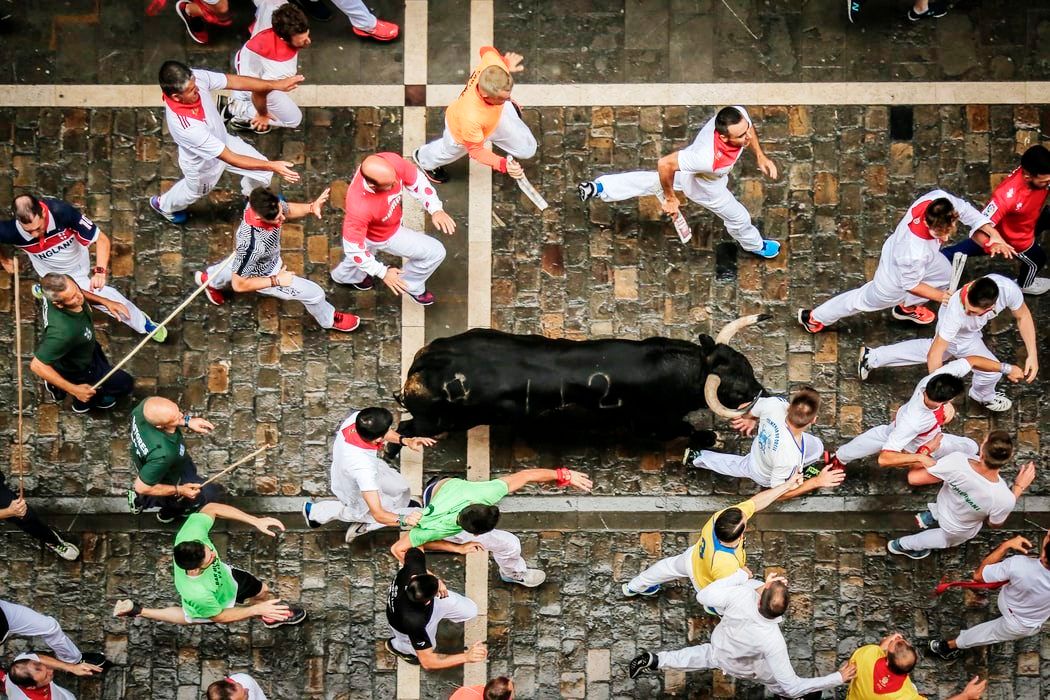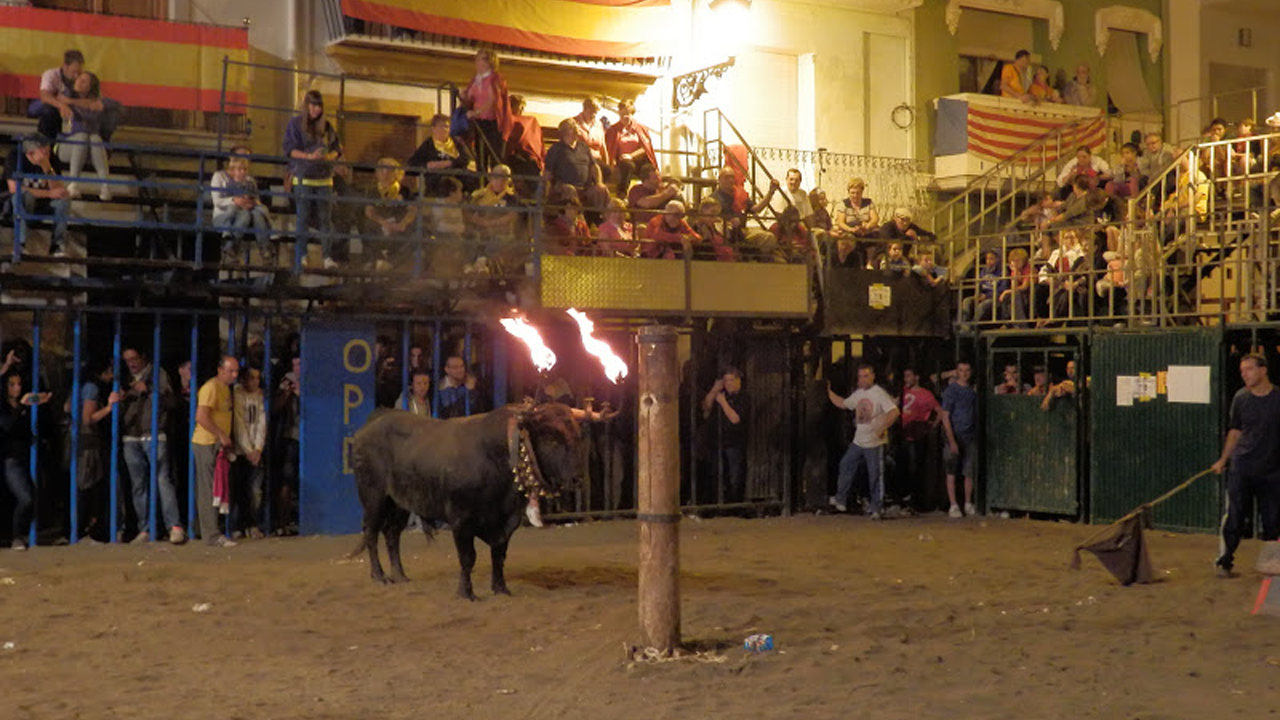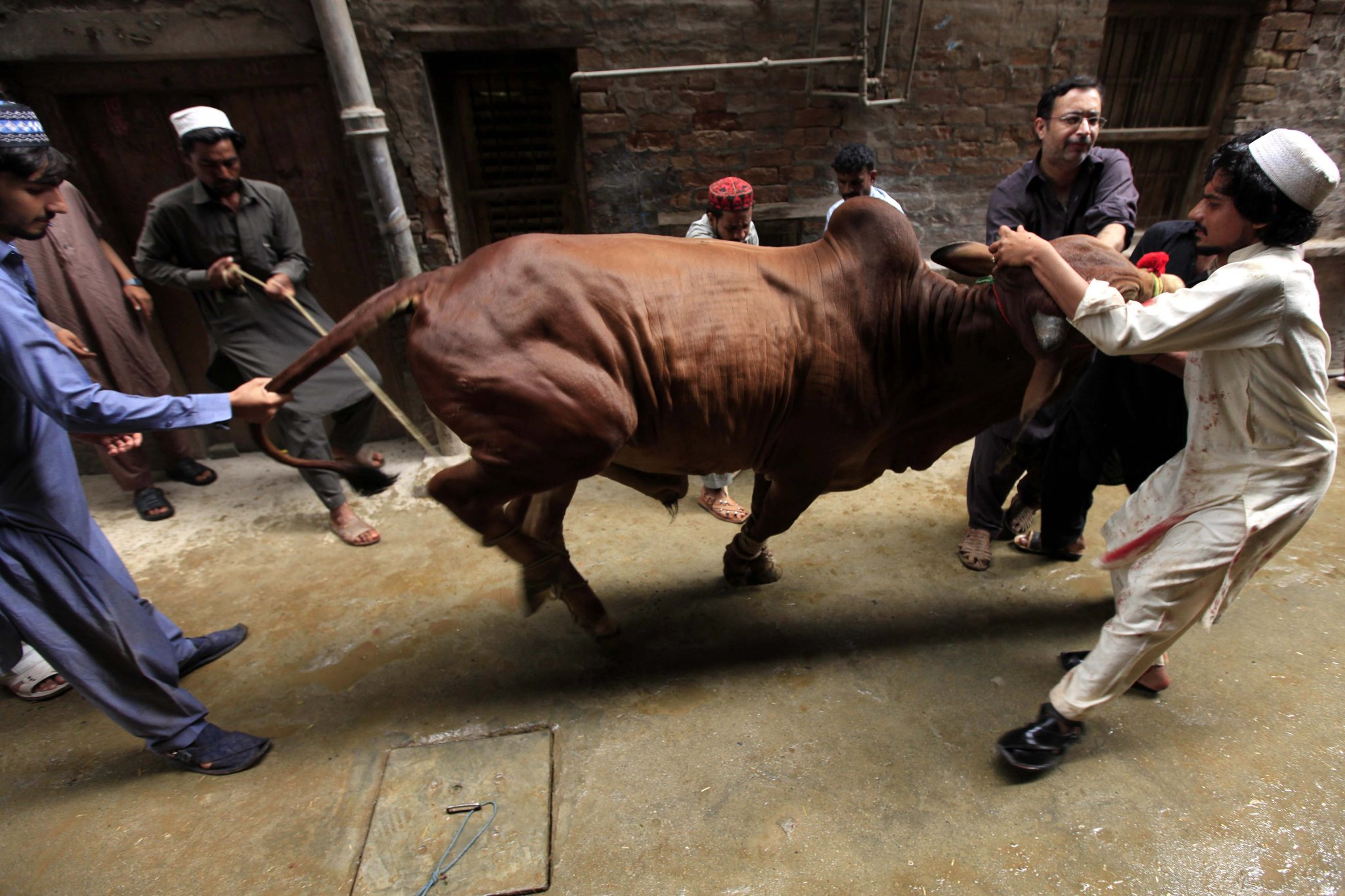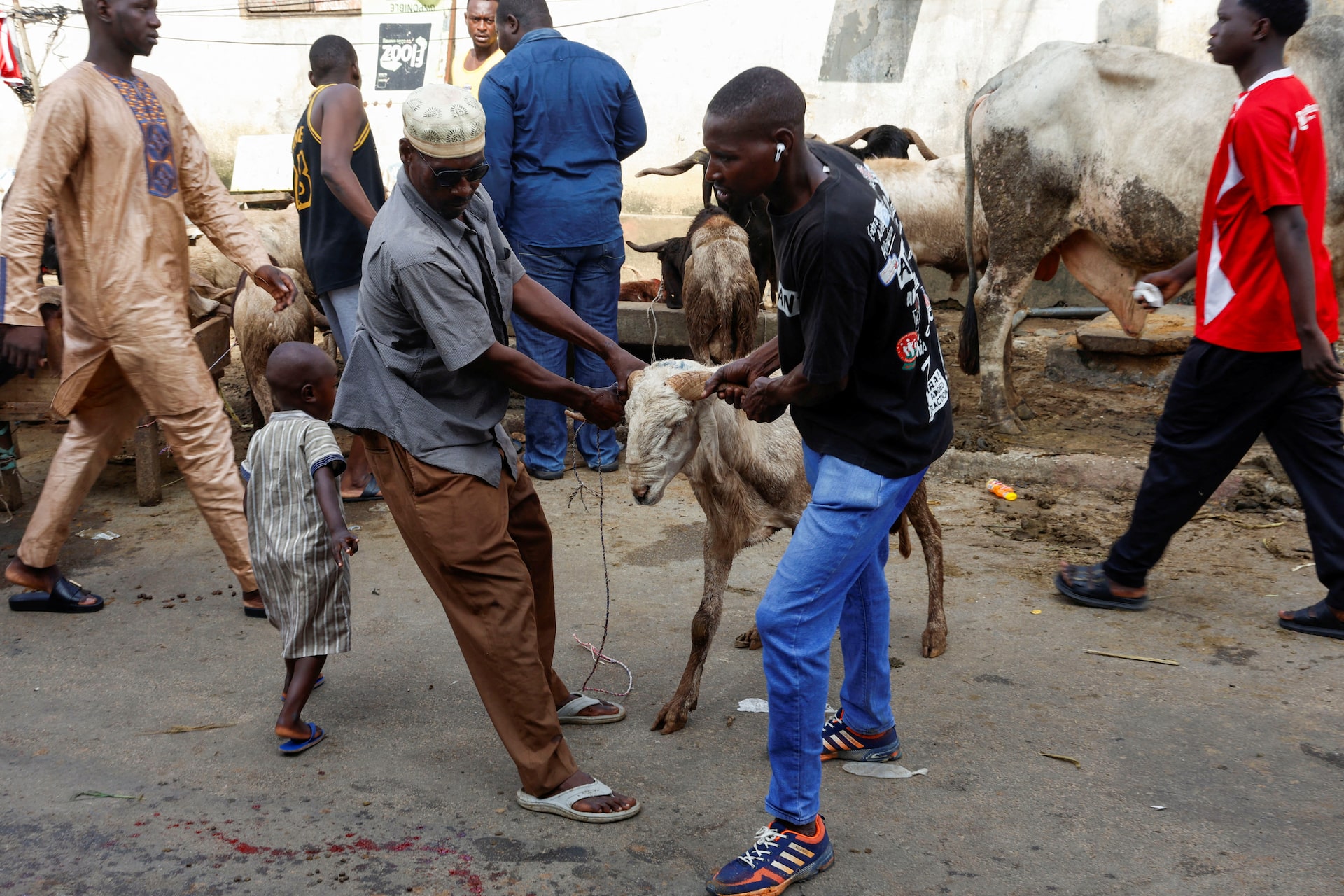
After no less than 30 failed Climate Change Conferences, and a decade after the one held in Paris, which is considered an important milestone but like all the others is also a failure, it is an appropriate time to revisit the text that attempts to examine the reasons and causes of humanity’s failure to deal with the climate crisis – the greatest challenge it has ever faced.
Climate Change Humans Don’t
A decade ago we have written a critical review about the Paris agreement that contained specific matters in the climate agreement which world leaders were vainly proud to celebrate.
We argued that the Paris convention is far less exceptional, and more of another failure in the same line of failures in the way humanity confronts its greatest challenge ever. The convention’s greatest achievement, perhaps its only achievement, was that after 25 years of failures, the world’s so called leaders had finally managed to finalize a climate convention with a signed agreement.
But practically, the Paris Agreement was actually no more than a statement of intent, as any aspect of actual significance was set as non-legally binding. Instead, each country got to set its own reduction targets called “Intended Nationally Determined Contribution” (INDCs), and on a voluntary basis. None of the countries, no matter their level of emissions at the time or their historical contribution to climate change, were legally bound even to their own proclamations.
And what made the agreement even more ridiculous was that according to an evaluation published by the UNFCCC (The UN body that deals with climate change) even if all pledges were fully implemented, global warming was still expected to increase by between 2.7 °C and 3 °C.
There were many other significant problems with the Paris agreement besides that it isn’t legally binding, and that the evaluation of the sum contribution of all the INDCs, fell short of the formal goal of the summit (staying well below 2 °C increase in the average global temperature since pre-industrial levels by the end of the century, and even aiming for 1.5 °C), such as the formal reliance on the assumed but not yet existing option of “negative CO2 emissions” by using future technologies that can take carbon out of the atmosphere; the refusal of developed nations to make at least their INDCs legally binding considering that they were and still are the greatest contributors to the climate crisis while mitigation contributions by developing countries would be voluntary and conditional on the provision of financial support by the industrialized countries; the fact that although the agreement calls for rich countries to help in providing poorer countries with the finance needed both to adapt to climate change and mitigate emission, all financing is voluntary; and of course the fact that as usual, the ones who are always absent from humans’ discussions over the planet are the rest of the species living on it, despite that even according to the minimal estimations, greenhouse gases produced by industrially exploited animals represent 14.5% of all anthropogenic greenhouse gasses emissions, with other estimations claiming for around 50%, the agreement didn’t mention any of it nor did it recommend even a gradual global shift towards a plant-based diet. Animals were totally absent from the table of discussion and appeared only on the dinner table as courses.
For a more elaborated criticism over the Paris agreement please read our post.
Anyway, even we, with all our criticism over the allegedly historical agreement, didn’t anticipate such a lame implementation of the promises written on it.
As super pessimistic people regarding the human race we have expected very little, but what has happened since the Paris Agreement was even lower than our very low expectations.
Don’t Forget Paris
Not only was the Paris agreement’s goal lame to begin with, UN reports have found that emissions are on track to be 16% higher in 2030 rather than 45% lower, which is the cut that science shows is required to keep below 1.5 °C. According to current models, the expected 16% rise in emissions by 2030 would result in at least 2.5 °C increase of global temperature.
Not only that the Paris agreement’s Intended Nationally Determined Contribution were highly inadequate to achieve its target, not even one nation has managed to keep to its proclaimed INDCs.
According to a recent study published in Nature, in order for humanity to have above 50-50 chance to avoid global average temperatures increase of no more than 1.5C above pre-industrial levels, all proven coal reserves, oil reserves and fossil methane reserves must be untouched. There is absolutely zero chance of that happening.
In fact the course is opposite. As the latest production gap report by the UN and academic researchers shows governments are collectively projecting an increase in global oil and gas production, and only a small decrease in coal production. By 2030, governments are planning to extract 110% more fossil fuels than their Paris agreement pledge permits.
Politicians are allegedly binding oil and gas industries to go green, but in fact, according to a recent report by the International Energy Agency “clean energy investments by the oil and gas industry accounted for only around 1% of total capital expenditure”.
Since the Paris agreement and in spite of it, the world’s 60 largest banks have invested about $3.8 trillion in fossil fuel companies.
Despite promises written in the Paris agreement, the richer countries have not delivered $100 billion a year to poorer countries to help them adapt to and fight climate change.
Despite the Paris agreement, in the past three years, G20 governments and multinational development banks spent two and a half times on international finance for fossil fuels than they did on renewables.
Since the Paris agreement and in spite of it, greenhouse gases emissions have continued to rise.
The Paris agreement had shamefully low expectations and even that wasn’t implemented.
And unsurprisingly COP30 has turned out to be more of the same, if not even worse.
But this time, as opposed to our response to the Paris agreement, we’ll not analyze the agreement, despite that there is plenty to unpack there, but rather take a larger scope. That is because as seen in former climate summits (particularly the climate summit held in Paris because of the high expectations that this time the world is serious, and as has already been analyzed and reported by Climate Action Tracker that despite the pledges, the world is still nowhere near its goals on limiting global temperature increase but is actually heading for 2.4C of warming and when considering governments’ actual policies rather than pledges the projected warming is of 2.7C) agreements and declarations are meaningless. However the situation that brought their need in the first place isn’t. So we find it more interesting, teaching and eye-opening to discuss not the future application of the present climate summit, but the question how has humanity reached the situation that it might bring its own extinction by its own hands and is doing virtually nothing to save itself.
Doubtful Explanation
Many are arguing that the main reason for humanity’s failure in dealing with the climate crisis is the toxic (literally and conceptually) effect of the fossil fuel industry that has hired the services of lobbyists, think tanks, and even scientists to raise doubt regarding climate change.
At first they denied that the climate is changing, later they argued that the climate is changing but that it is a natural phenomenon not human caused, and most recently, mostly due to the piles and piles of evidences supporting both counter claims, that the climate is changing and it is partly due to human activity, but it is not as serious as the “alarmist scientists” and the “hippie tree huggers” are saying, and so shouldn’t effect humans’ unnegotiable lifestyle.
Obviously, and it is well documented in several studies and books, the fossil fuel industry, and many other industries that are depended on fossil fuels in many ways (some call it the carbon economy), have made tremendous and unbelievable efforts to cast doubt about climate change. Lobbyists, scientists, dozens of think tanks, so called research institutes, and public relations companies were funded and hired by the carbon economy specifically to try and make climate change doubtful. But unlike other issues, in the case of climate change their role was rather marginal.
Had it really been a successful campaign there would have been many more climate deniers, especially in high power political positions. But even the most self-interested politicians are not denying climate change, or that it is anthropogenic. That is of course except for Donald Trump, but the fact that Trump of all people is a climate change denier probably does a disservice for climate change denial. In other words, if someone like Trump thinks something, excluding his advocate supporters, the intuition of most humans, especially outside the U.S., is that it is probably the opposite.
Most of the ones who hold an influential position are not idiots like Trump, they have other, more sophisticated ways not to seriously tackle climate change other than simply denying it. And our point is that had the ‘merchants of doubt’ truly succeeded, these people would have publically denied climate change and would have withdrawn from the Paris agreement just as Trump did. They don’t because they know that climate change is a consensus. They don’t because the denial campaign has failed. So they can’t simply publically and explicitly deny climate change – so that they could maintain business as usual, avoid all kinds of social and economic changes, and keep their “generous” donors from the carbon economy – they have to do all that in other ways. Mostly by publically declaring one thing, and meanwhile keeping business as usual, or looking for loopholes such as an international carbon market which allows them to supposedly meet their climate change goals by trading carbon credits or offsets with poor countries without significantly reducing their own emissions, or proudly declaring that their nation will stop financing new coal projects but omitting the fact that it only goes for official governmental financial involvement while private companies can go on as they please (often with governmental subsidies), or what seems to be the unofficial sport of climate conventions – postponing significant decisions for later, or of course, the official sport of climate conventions – proudly declaring the signature of whatever agreement offered, as long as it is not legally binding.
That is more or less a simplistic and brief description of the past 30 years of climate conventions, shameful, embarrassing, absurd, irresponsible, but not a product of climate denial. These (in)actions are not a product of denial, but of shortsightedness, corruption, procrastination, priority distortion, indifference, injustice, political decay and moral decay.
Laying all the blame on the carbon economy and their ‘merchants of doubt’ is way too flattering to humanity. The case is not that there was a real doubt, but if anything, that doubt was used for political and economic gain, by people who didn’t doubt climate change, but the continuation of their political careers.
The vast majority of the so called world leaders don’t really have a doubt about climate change. Most of which are not stupid enough to believe the ones who have great interests and are not professional scientists vs. professional scientists who have no self-interest. The problem is not the doubt, it is the myopia, the lack of threat from the general public. The problem is that CEO’s of oil industries offer much more to elected representatives than their electors. And the blame here is not only on the system, though it certainly plays a part in this, but on the people as well. There is not even one green party ever to be chosen to form a government in its own nation. It came close in Germany, but only there, only after some unprecedented floods, and eventually it didn’t happen. And Germany is the exception. There are only a few nations in which a green party can be a part of the coalition, and in most nations they can only dream of a green party being elected at all, or of even having one. And that is the public’s fault. Had people cared about climate change, or any other so called environmental issue, they would have demanded, and voted for environmental representatives on the municipal and national level. But it rarely happens. People act on a much more personal, immediate and biased level. Me, Here and Now, and almost never Them, There, and in The Future.
Humanity wasn’t really convinced that climate change is doubtful. The facts were known, and for a very long time, and not only by some pioneering scientists.
Scientific research on carbon dioxide and climate has been going on for about 150 years. In the mid-nineteenth century, the Irish experimenter John Tyndall first established that CO2 is a greenhouse gas. In 1896 the Swedish chemist Svante Arrhenius first calculated the impacts of doubling the amount of carbon dioxide on global temperatures, and estimated that it would raise global temperatures by five to six degrees Celsius.
Already in the 60’s American scientists have warned American politicians about climate change. In 1965, the President’s Science Advisory Committee asked Roger Revelle, then director of the Scripps Institution of Oceanography, to write a summary of the potential impacts of carbon dioxide induced warming. His forecast was that by the year 2000 there will be about 25% more CO2 in the atmosphere and this will modify the heat balance of the atmosphere to such an extent that marked changes in climate are likely to occur.
In 1977, the head of the National Oceanic and Atmospheric Administration, had headed a committee for the National Research Council that warned of the serious impacts of climate change: “We now understand that industrial wastes, such as carbon dioxide released during the burning of fossil fuels, can have consequences for climate that pose a considerable threat to future society … The scientific problems are formidable, the technological problems, unprecedented, and the potential economic and social impacts, ominous.”
In 1988, James Hansen then director of NASA’s Goddard Institute for Space Studies, has made his famous testimony before a congressional hearing. And later that month, the World Conference on the Changing Atmosphere, the first major international gathering to set specific targets for emission reductions, was held in Toronto, with 300 scientists and policymakers from 46 countries. The conference recommended that governments cut emissions by 20% below 1988 levels before 2005.
And later in 1988, The Intergovernmental Panel on Climate Change (IPCC), held its first session.
So by 1988 (at least 25 years late) the whole world had definitely known about climate change.
And in 1992, every nation in it had signed the United Nations Framework Convention on Climate Change (UNFCCC) during the first United Nations Earth Summit held in Rio.
The fossil fuel industry is super mega rich, highly connected, and has a very strong lobby, no doubt. But it is not as if it is the fossil fuel industry vs. a few environmental organizations and activists, and so it is not a fair fight; it should have been the fossil fuel industry against the entire human race, backed with every scientist who is not paid by these industries. Such a consensus among the scientific community as the one regarding climate change is pretty rare. The carbon economy barons have tried, are trying and will keep trying to doubt the science, but trying to give this as an explanation to the feeble reaction of humanity to the climate crisis, is to unjustifiably cut them some slack. Other issues can only wish to have such a good starting ground with the entire scientific community in their corner. This is not a clear case of hiding crucial information from the public. If anything it is the opposite, people knew for a very long time, they just didn’t really care.
The harsh indictment against humanity is not that the facts were there but no one bothered to listen, but that the facts were known and no one bothered to act upon them.
Don’t get this wrong, we are not denying that the merchants of doubt had some effect or that there is a significant political factor to the climate change issue. For example, it is no coincidence that climate deniers are almost always strongly conservative white men. But their denial is mostly coming from an automatic opposition to everything that the other group says. And climate change being, at least originally, an environmental issue, and one that scientists have figured out, for conservative zealot white men, opposing it is a reflex. Another, more interesting group of climate change deniers is people who directly gain from carbon economy. And that is not only fossil fuel industry CEO’s but many humans whom their paycheck is signed by them. The statistical anomaly of coal mining towns is very famous, and it is an indication of the infamous saying of Upton Sinclair: “It is difficult to get a man to understand something, when his salary depends upon his not understanding it!”
We are mentioning this because the same could have been said about all humans since they all allegedly indirectly, gain from the carbon economy. Not wanting to change their way of life and wanting to keep gaining from the carbon economy, the vast majority of humanity could have preferred to believe that climate change is not happening, or does but not because of them, or is not that serious that they need to change their way of life. Climate denial should have been the norm because then humans could easily keep their own private business as usual.
And indeed some argue that the reason that spreading doubt is so effective is that humans are looking for these claims, they want the science to be wrong.
But most humans do believe climate change is true, anthropogenic and serious. And that is certainly the case after the series of extreme weather events that occurred recently since humans have a (false) tendency to interpret the world according to recent events and ones they somehow personally experienced.
Most humans don’t doubt the science and don’t feel a need to, as they somehow don’t view climate change as an attack on their way of life and so have a strong incentive to view the science, no matter how unequivocal, as doubtful since accepting it means that they must change their way of life. Most people accept the science and yet don’t change their way of life. Most humans are so inherently inconsistent and are indifferent enough to have it both ways.
Even accusing humans of wanting to accept the doubts regarding climate being anthropogenic because they want their life to stay the same, is flattering. Humans are not that consistent to begin with that they would experience a cognitive dissonance over the climate crisis, just as they don’t experience a cognitive dissonance when confronted with their cruelty to animals by consuming them despite them considering themselves as loving animals. They don’t even need excuses, they can just shrug and keep doing as they wish.
They are not threatened by accepting the climate crisis because it means that they can’t do all the things they like doing despite them contributing to the crisis, they can easily keep doing it despite that. The gratification is too immediate and too strong for them to stop just because it contradicts what they know.
The vast majority of humans are not climate change deniers yet at the same time they keep their business as usual, and that’s because way more than they are creatures who seek consistency, they are mediocre, passive, indifferent creatures who seek convenience, the familiar, and immediate gratification. That’s why almost each and every human who can afford a private car, abroad vacations, abundant unnecessary merchandise, and of course animal based products, does so, and does nothing about the fossil fuel industry, despite not doubting climate change.
The climate crisis is not mostly a case of bad people succeeding, but much more of common people being bad. Bad not only by being so indifferent to what should have been in their eyes the biggest crisis ever because it is an existential one, and yet only relatively few are viewing it that way and the rest are, as always, indifferent, but being bad by actively fueling the crisis. Day by day.
The main reason for humanity’s failure in dealing with the climate crisis is not the success of the carbon economy, but the failure of humanity.
Capitalism and Neoliberalism
Some blame the climate crisis and humanity’s incompetence in dealing with it, on capitalism and neoliberalism. They argue that besides that these ideologies sanctify profits at the expense of everything else including changing the climate of their very own advocators’ only home, they are also creating the political and psychological climate that prevents humans from resisting this crisis, by making humans politically incapable in confronting the fossil fuels industries, and psychologically reluctant to resist the crisis because these ideologies place humans in the center of everything and make them feel entitled to have whatever they want and therefore shouldn’t compromise on their lifestyle. Not even when they are confronted with an existential threat. In other words they can’t take responsibility for the crisis because they are politically weak, and they don’t want to because they are psychologically captivated.
These explanations are true but very partial. It is true that some of the blame is on capitalism and neoliberalism mindsets and it is true that they have turned humans to be even more self-absorbed, and to feel even more superior and entitled, but it didn’t create the climate crisis nor the human character. Undoubtedly neoliberal ideologies have significantly intensified things on a practical level and probably on a psychological level as well. But people have had such a mindset to begin with. Neoliberal ideologies haven’t changed the human mind, but it is more like a hand in glove.
Capitalism had surely intensified the climate crisis but it didn’t create it. Ecologically destructive practices have begun way before capitalism did, and even the specific commercial use of coal is about 300 years old.
And it is not that ecologically destructive practices are exclusive to neo-liberal capitalist societies. Communist and socialist societies were ecologically destructive, highly polluting and industrialization enthusiasts as their capitalist counterparts. They may have done so to a lesser degree in a quantitative sense but that is because in the times they were prevalent they contained less people and had less fossil fuels to burn, but it is not that if these non-capitalistic societies had remained to this day they would have emitted less GHG. These societies have conducted mega industrialization projects, glorified what they viewed as progress, destructed everything in their way just as much as capitalist societies do.
The roots are in humanity’s ancient dominion ideology – the destructive narrative of dominating the natural world, not in the late neo-liberal ideology. Viewing everything around, including rivers, ponds, lakes, rocks, mountains, forests, plants, and of course other animals, as resources, is more or less as old as humans are. Deforestation, slash and burn methods, mass scale hunting, cultivation, intended fires, poisoning, culling, water sources diversion and etc., are all thousands of years old. The exploitation of other species begun as soon as it was possible, not as soon as neo-liberal capitalistic ideologies have emerged.
Mentally, the industrial revolution has begun much sooner than it started technically. Humans have viewed the planet in an industrial mindset long before industrial technology was invented. The environment, including everyone in it, was according to humans at their service from the moment they have realized that they are the strongest species around. And with that came the feeling of entitlement. That may not yet filtered into the inner dynamics of human societies, meaning most individuals may have not felt that they are entitled to everything within their human societies, but they have felt entitled as part of a superior species which is entitled to everything. This dominion worldview was dominant more or less from and through the entire human history. Ecologically destructive practices didn’t begin with humans becoming industrial, but with homo sapiens becoming humans.
Mentally Incapable
Some suggest that humanity’s response to its existential threat is so poor because humans’ brains are not wired to comprehend a slow, gradual, invisible, abstract, global, future threat; but immediate, concrete, abrupt, personal and recognizable ones.
That’s why some laid some hope on that recent Climate Change Conferences would be successful as it happens to come right after a period of extreme weather events. In that respect, the ground for the last summits was more promising than previous ones with record-breaking heat waves in North America, a second year of drought in sub-tropical South America, floods in China and Western Europe, and fires in the Mediterranean.
But such hope lays on a very hopeless trait of humans – being severely alarmed about something for decades is nothing compared with seeing just a tiny pinch of what is expected to become routine and was well informed about way ahead, with their own eyes. This psychological tendency leads humans to vastly overestimate dangers of recent and closer events, and disregard distant and remote dangers even if they are infinitely greater. Furthermore, humans tend to believe that the likelihood of events is greater if they have heard about them from family and friends, or from humans they identify with more, than when they hear about them from professional experts. In other words, humans’ perception of danger favors proximity, draws on personal experience, and is drawn to images and stories, especially ones that fit existing values.
The fact that humans need a story and not scientific facts, with identifiable victims and mostly preferred ones who are as similar to them as possible, good and bad characters, and etc., is not very flattering, especially coming from a species which constantly brags about its intelligence and planning ability.
And a cluster of extreme weather events doesn’t at all ensure that humanity would decide to take proportional actions. That is because the people who are the current official decision makers don’t really care about whom who would be mostly affected by these events, and because they are not expected to be around when these events reach their front yards as well, and because the actual decision makers don’t care at all. They can always afford to move into safer places using the money they made by making other places unsafe.
In addition, psychological research finds that people who survive climate disasters, like people who escape car accidents unscathed, are prone to have a false sense of their own future invulnerability. In a book called Don’t even think about it – why our brains are wired to ignore climate change, author George Marshall argues that the impact of extreme weather events actually shed some light on why and how people can come to ignore climate change: “People yearn for normality and safety, and no one wants to be reminded of a growing global threat. As they rebuild their lives, they invest their hopes along with their savings in the belief that the catastrophe was a rare natural aberration. At a community level they collectively choose to tell the positive stories of shared purpose and reconstruction and to suppress the divisive issue of climate change which would require them to question their values and way of life.”
Another reason not to lay hope on the recent cluster of extreme weather events is that once such events become regular, they would be accepted into humans’ status quo. What now are extreme weather events, would soon become the new normal. As earlier mentioned, humans mainly respond to the abrupt, immediate and also the unfamiliar. Currently these events are all of which, but once they become routine, humans, who even currently don’t seem to be highly affected by them, would be even more indifferent.
After about 200 years of gaining from burning fossil fuels, humanity is facing a crucial crossroad. And it seems that it is choosing to keep hurting others so it can keep gaining. Now it is mostly nonhumans and poor people, and later it would come to them too. But the thing about later, is that it happens later. It is not at all surprising that there were many declarations and a wide agreement regarding the 2050 goals and modest declarations and little agreement regarding the 2030 goals. Meeting the goals of 2050 would be the problem of someone else, but meeting the goals of 2030 is my problem, and I don’t want to deal with it.
Indifferentcene
Some argue that humans’ inaction reaction to the climate crisis is because they feel powerless. But that is just too easy. Humans have a lot to do about the climate crisis if they wanted to. They can, first and foremost, and first and foremost for ethical reasons, stop consuming animals. They can use only public transportation, ride bicycles, or walk if it is possible, live minimally, consume much much less of everything and especially oil related products such as plastic, they can choose only local to avoid at least overseas shipment, they can choose second hand and recycled clothes only and make do with as little of them as possible, they can educate themselves and then educate others, they can donate to relevant organizations, better yet volunteer in relevant organizations, they can protest, resist, and demand change every single day. They are not doing any of it. Let’s suppose that they can excuse not actively participating in climate activism exactly because they feel powerless, but how can they excuse actively making it even more powerful?
Most humans’ participation in decision making comes down merely to voting, usually only once in a few years, usually for a candidate that doesn’t really represent them, and always to one who ends up disappointing them. But all they do about it is complain in their private living room, sigh, argue about it with the people around them, or just shout at the news.
Most humans, or at least enough of them know that it is not even the humans they have voted for who are making the decisions that have the most significant impacts on their lives. But it goes on. Most humans, or at least enough of them know that there is not even one real democracy in the world, and yet it goes on. Corporations are not gods, the fact that they have more power than governments these days is not a physical fact, it is a political fact. It can be changed. If people overturn each and every government that doesn’t change this dire situation then this situation would be stopped. The laws that currently protect corporations from nations’ prosecution when the citizens of these nations are harmed by these corporations can be changed by citizens who vote for politicians who would quit from trade agreements, wave off their WTO membership and really protect the real interests of their citizens. But that would never happen.
There is a reason why a French revolution is not highly expected in our world today. Too many people are living too comfortably to risk their private life for the greater good. And many other people, whom their lives are very uncomfortable have to risk too much to gain too little if anything.
And maybe this is not really their real interests. It seems obvious that clean and safe air, clean and safe water, and every other product being clean and safe is in peoples’ most basic interest. But is it though? How come they don’t stop purchasing harmful things for themselves and for their families? Do you really believe that they will be willing to pay the real price of things if they would have to? If everything would be manufactured safely, cleanly, locally, minimally, with no exploitation, with no pollution and etc., would they be willing to pay for these products? If you think that they would, why don’t they do it now? There are many companies that at least try to produce products under these standards, vegan, organic, local, fair trade, transported by electrical vehicle powered by wind turbines only and etc., why aren’t these kinds of products the most popular?
That is since the vast majority of people are making small selfish decisions because they are living small selfish lives. They don’t think about the fate of their species, and certainly not about the fate of other species. They barely even think about their future offspring, not to mention their offspring’s offspring if they currently can’t see them because they don’t exist yet. Humans mainly think about themselves, and two generations ahead tops (that is if they already have grandchildren). They are just too centered in their private little lives, which are way too comfortable for them to jeopardize. They are not even willing to do the basic simple things such as stop consuming animals which is undoubtedly the best thing they can do on the personal level.
The convenience of a private car, a cheap flying ticket, the abundance of unnecessary multi packed products that with the ease of a click reach their door step, and the so beloved and so familiar taste of a corpse in a bun, are winning in almost each and every battle, among almost each and every human, against almost each and every big idea, and unequivocal fact.
Needing to change is no guarantee that people will change. For that to happen people have to want to change and have the will to change.
Seriously dealing with climate change means that humans need to reduce their living standards and accept some short-term costs in order to at least mitigate much higher costs in the long-term. And this is very unlike humans. The vast majority of humans are willing to let what they view as their home be destroyed, they are practically willing to let corporations come to what they view as their lands and put them and their families at risk by polluting the air, water sources and their homes, and they are practically willing to let their governments protect the interests of foreign corporations instead of their own – their own citizen. But they are not willing to change their lifestyles. No amount of awareness will overcome their unwillingness to lower their standard of living.
Humans take too much pleasure of industrialization to oppose it. It is hard for the ones who have even just a little money, to waive off the sense of comfortableness and control, even if it is utterly fake.
The dominant notion is ‘grab as much as you can’. And the ones who have managed to grab some are not willing to let go. No matter how high the price is even in their eyes. This basic attitude, which applies to almost all of humanity, excluding no more than some thousands of activists, is the climate of the climate crisis.
All the suggested explanations for humanity’s failure to address the climate crisis that were mentioned along this text, are right, but they are partial, and way too flattering to humans. But that is very understandable, since if it is not the merchants of doubt, capitalism, neo-liberalism, the political system, human psychology and etc., then it is humanity as a whole.
But can we blame ourselves? Yes we can. If we can’t take responsibility for the climate crisis, the least we can do is take responsibility for not taking responsibility for it, by admitting that we are an extremely irresponsible, short-sided, greedy, arrogant, indifferent, and dangerous species, and therefore got to go.
An organization called Extinction Rebellion should have been initiated a long time ago, but not one calling for a rebellion against human extinction, but one rebelling the human species and demanding its extinction.
A real climate justice is not to fight so that humans from the most vulnerable places won’t be hurt the most despite that historically they have been contributing the least to the crisis. Considering everything that humans have done, are doing and will keep doing, climate justice is human extinction.
Don’t get it wrong this is not suggested as a punishment or retaliation. We don’t think that the human race should go extinct because it fails to save itself from extinction. There are many other strong reasons to support and advocate for human extinction. Its utter failure in relation to the climate crisis is just an opportunity to acknowledge that.
We disagree with Naomi Klein’s book title This changes everything. Even this doesn’t change anything. However we do agree with a proposition she raises in it: “What if global warming is not only a crisis, what if it is the best chance we are ever goanna get to build a better world?” Indeed it may be the best chance we are ever goanna get to create a better world, one without humans.

